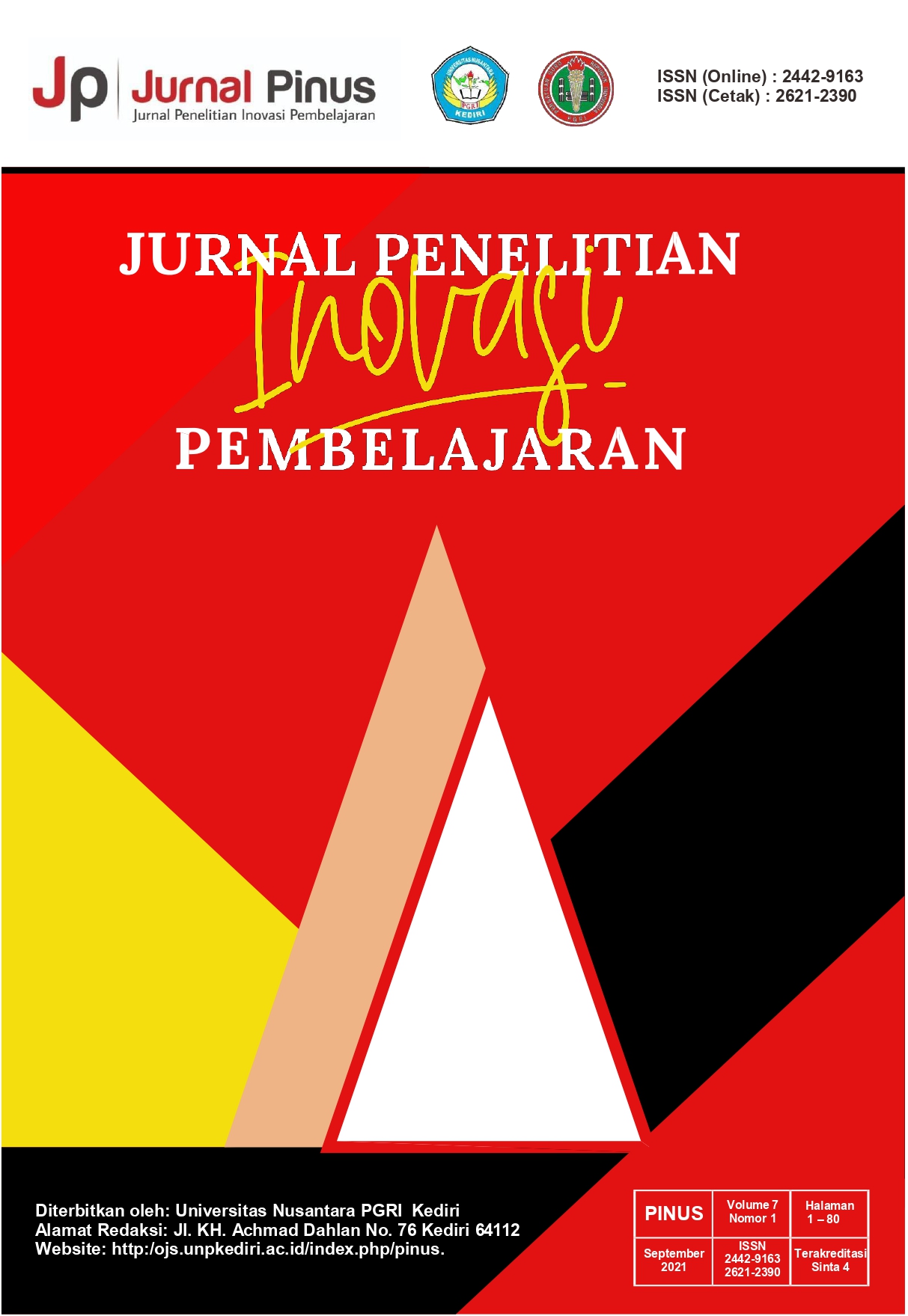Membina Karakter Aktivis Mahasiswa Melalui Mata Kuliah Pendidikan Kewarganegaraan
DOI:
https://doi.org/10.29407/pn.v8i1.17587Keywords:
Citizenship Education, Student Activists, Development, DemocracyAbstract
This research is motivated by the development of student activism, especially at the University of Timor, East Nusa Tenggara. One of the manifestations of the activities of student activists can be seen from the demonstrations of students carrying campus attributes and alma maters. Demonstrations that are actually the mouthpiece of democracy become less than perfect when they are colored by unethical actions when expressing their aspirations, such as using harsh words, violating demonstration rules and destroying public facilities. The people really expect the role of students but not with unethical actions, so it is the duty of the campus to foster the character of student activists to become plenary students. This study tries to explain the role of Citizenship Education courses in fostering the character of student activists at the University of Timor. Literacy studies and case studies were chosen as methods in this research so that they can find the formulation of the coaching model. This study uses a qualitative approach so that it can find facts in depth through interviews, observations and literacy studies as a comparison of character building for student activists as well as elaborating an appropriate model to cultivate the character of students who have Pancasila democracy
Downloads
References
Arifianto, A. R. (2019). Islamic campus preaching organizations in Indonesia: Promoters of moderation or radicalism?. Asian Security, 15(3), 323-342.. DOI: https://doi.org/10.1080/14799855.2018.1461086
Burhan, Bungin. (2001). Imaji Media Massa, Konstruksi dan Makna Realitas Sosial. Yogyakarta: Jendela.
Burhan, Bungin. (2011). Sosiologi Komunikasi: Teori, Paradigma, dan Diskursus Teknologi di Masyarakat. Jakarta: Kencana.
Cagara, Hafied. (2012). Pengantar Ilmu Komunikasi. Jakarta: PT Rajagrafindo Persada.
Cahyono,Habib. (2019). Peran Mahasiswa Di Masyarakat. Jurnal Pengabdian Masyarakat Setiabudhi, Vol. 1, No.1. Hlm32-43
Cholisin. (2000). IKN-PKN. Jakarta: Universitas Terbuka.
Dewi Kartika Sari dan Royke R. Siahainenia, 2015, Gerakan Sosial Baru di Ruang Publik Virtual pada Kasus Satinah, Jurnal Ilmu Komunikasi vol. 1
Ilham Syahrul Jiwandono. (2020). Dinamika Sosial Sikap Narcisstic Aksi Demonstrasi Mahasiswa Dalam Prospek Demokrasi Indonesia. Equilibrium: Jurnal Pendidikan. Link: https://scholar.google.co.id/citations?view_op=view_citation&hl=id&user=aafOTboAAAAJ&citation_for_view=aafOTboAAAAJ:zYLM7Y9cAGgC
Jiwandono1, Ilham Syahrul. (2020). Dinamika Sosial Sikap Narcisstic Aksi Demonstrasi Mahasiswa Dalam Prospek Demokrasi Indonesia. Equilibrium : Jurnal Pendidikan Vol. VIII. Issu 1. Januari-Juni 2020. DOI: https://journal.unismuh.ac.id/index.php/equilibrium/index
Indriyo Gitosudarmo & I Nyoman Sudita. (2014). Perilaku Organisasi Yogyakarta: BPEE.
Jude Lorenzo Taolin. (2021). Resmi!! Sekretaris DPRD TTU Polisikan Aliansi Mahasiswa Cipayung. [Berita Online]. Diakses pada 2 Januari 2022. Link: https://halamansembilan.com/resmi-sekretaris-dprd-ttu-polisikan-aliansi-mahasiswa-cipayung/
Kapri, U. C dan Rani, N. (2014). Emotional Maturity : Characteristic and Levels. International Journal of Technological Exploration and Learning (IJTEL). Volume 3. Nomor 1. ISSN:2319-2135. https://archive.org/details/Httpijtel.orgv3n1359-361CRP0301P22.pdf
KBBI. (2016). “Kamus Besar Bahasa Indonesia”, https://kbbi.kemendikbud.go.id/entri/mahasiswa, diakses pada 30 April 2019
Marsh, B. A., & Knight, W. E. (2006). Knowledge Levels of First-Year and Senior Students At Baptist, (August). https://doi.org/10.1080/15363750701331562.
Maswan & Khoirul Muslimin. (2017). Teknologi Pendidikan Penerapan Pembelajaran Yang Sistematis. Yogyakarta: Pustaka Pelajar.
Moh. Nazir. 2011. Metode Penelitian. Bogor: Penerbit Ghalia Indonesia
Samsuri. (2011). Pendidikan Karakter Warga Negara, Yogyakarta: Diandra Pustaka Indonesia
Santoso, Thomas. (2002). Teori-teori Kekerasan. Jakarta: Ghalia
Sardiman, A.M. (2011). Interaksi dan Motivasi Belajar-Mengajar. Jakarta: Rajawali Pers.
Sari, Dewi Kartika dan Royke R. Siahainenia. (2015). Gerakan Sosial Baru di Ruang Publik Virtual pada Kasus Satinah. Jurnal Ilmu Komunikasi, 12 (1), 105-118.
Siallagan, DF. (2011). “Fungsi dan Peranan Mahasiswa”, www.academia.edu, diakses pada 2 Januari 2022.
Siregar, Hariman. (1994). Hati Nurani Seorang Demosntran/Hariman Siregar, Jakarta
Sorokowska, A., Oleszkiewicz, A., Frackowiak, T., Pisanski, K., Chmiel, A., Sorokowski., P (2016). Selfies and personality: Who posts self-portrait photographs?. Personality and Individual Differences. 90 (3
Sorokowski, P., Randall, A. K., Groyecka, A., Frackowiak, T., Cantarero, K., Hilpert, P., … Sorokowska, A. (2017). Marital satisfaction, sex, age, marriage duration, religion, number of children, economic status, education, and collectivistic values: Data from 33 countries. Frontiers in Psychology, 8(JUL), 1–7. https://doi.org/10.3389/fpsyg.2017.01199
Sumantri, Numan. (2001). Pembaharuan Pendidikan IPS. Bandung : Rosda Karya.
Surawan, Awang. (2016). Penegakan Hukum Terhadap Demonstran Yang Melakukan Pengrusakan Fasilitas Negara Sesuai Dengan Pasal 408 KUHP Di Wilayah Hukum Resort Pontianak Kota. E-Jurnal Gloria Yuris Prodi Ilmu Hukum Untan. Link : https://jurnal.untan.ac.id/index.php/jmfh/article/view/15411
Thomas Santoso, Teori-Teori Kekerasan, Ghalia, Jakarta, 2002, h.11
Walgito, Bimo. (2004). Pengantar Psikologi. Yogyakarta: Andi Offset
Winarno, Wing Wahyu. 2006. Sistem Informasi Manajemen. Yogyakarta: UPP STIM YKPN
Video:
https://youtu.be/wMiDpNyXKNM
https://drive.google.com/file/d/1cRqwf1iUKGoB1t7aF1cp-I3V6Jtxxk0z/view?usp=sharing
Downloads
Published
Issue
Section
License
Authors who publish with this journal agree to the following terms:
- Copyright on any article is retained by the author(s).
- The author grants the journal, right of first publication with the work simultaneously licensed under a Creative Commons Attribution License that allows others to share the work with an acknowledgment of the work’s authorship and initial publication in this journal.
- Authors are able to enter into separate, additional contractual arrangements for the non-exclusive distribution of the journal’s published version of the work (e.g., post it to an institutional repository or publish it in a book), with an acknowledgment of its initial publication in this journal.
- Authors are permitted and encouraged to post their work online (e.g., in institutional repositories or on their website) prior to and during the submission process, as it can lead to productive exchanges, as well as earlier and greater citation of published work.
- The article and any associated published material is distributed under the Creative Commons Attribution-ShareAlike 4.0 International License









